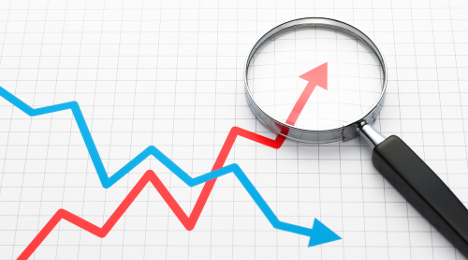January auto defaults stable as bank-card reading spikes

While analysts looked to sooth concerns about the bank card default rate reaching a 42-month high, S&P Dow Jones Indices and Experian pointed out that auto finance defaults in January remained at a level typically seen during the opening month of a calendar year.
According to the S&P/Experian Consumer Credit Default Indices released on Tuesday, auto finance defaults came in at 1.06 percent, up 3 basis points from the previous month. For perspective, here are the January readings of auto finance defaults analysts have determined going back 10 years:
January 2007: 1.43 percent
January 2008: 1.98 percent
January 2009: 2.64 percent
January 2010: 2.57 percent
January 2011: 1.58 percent
January 2012: 1.27 percent
January 2013: 1.10 percent
January 2014: 1.11 percent
January 2015: 1.03 percent
January 2016: 1.04 percent
Meanwhile the January composite rate, a comprehensive measure of changes in consumer credit defaults, also ticked up 3 basis points from the previous month to land at 0.92 percent.
The January bank card default rate came in at 3.21 percent, up 26 basis points from December. While still generating a notable rise, the latest bank card default rate still is only a fraction of the all-time high S&P Dow Jones Indices and Experian spotted back in April 2010 when it was 9.15 percent.
When comparing the bank card default rates among the four census divisions, analysts noticed the default rate in the South is considerably higher than the other three census divisions.
Also of note, the January first mortgage default rate stood at 0.72 percent, up 1 basis point from December.
Turning to another segment of its monthly update, S&P Dow Jones Indices and Experian also reported all five major cities they track regularly saw their default rates increase in January.
Miami had the largest increase, reporting at 1.67 percent, up 14 basis points from December. Miami’s composite default rate now sits at a 31-month high.
Dallas and Los Angeles both reported 8 basis point increases from the previous month at 0.75 percent and 0.80 percent, respectively, in January.
Chicago saw its default rate increase 5 basis points to 1.03 percent.
New York reported a default rate increase of 1 basis point from the previous month at 0.88 percent.
David Blitzer, managing director and chairman of the index committee at S&P Dow Jones Indices, looked to offer some perspective on what the latest data means.
“While consumer credit default rates on mortgages and auto loans remain low and stable, default rates on bank cards have popped up to the highest level seen since July 2013,” Blitzer said. “Recent data point to consumer optimism: retail sales rose 5.5 percent in January compared to a year earlier, consumer sentiment measures rose over the last two years, and employment and labor market conditions are favorable.
“Federal Reserve data on consumer credit and mortgage debt outstanding reveal that consumers are borrowing money,” he continued.
“Current default levels do not present any immediate concerns for the economy,” Blitzer went on to say. “During 2004-2006, a period of strong retail sales and consumer spending, bank card defaults were higher than today. Moreover, even if interest rates were to increase much faster than the Fed or most analysts currently expect, the cost of borrowing money is unlikely to create problems for consumers.
“The weak spot, if there is one, would come with a rise in unemployment and an economic downturn,” he added.
Jointly developed by S&P Indices and Experian, analysts noted the S&P/Experian Consumer Credit Default Indices are published monthly with the intent to accurately track the default experience of consumer balances in four key loan categories: auto, bankcard, first mortgage lien and second mortgage lien.
The indices are calculated based on data extracted from Experian’s consumer credit database. This database is populated with individual consumer loan and payment data submitted by lenders to Experian every month.
Experian’s base of data contributors includes leading banks and mortgage companies and covers approximately $11 trillion in outstanding loans sourced from 11,500 lenders.

 View The Latest Edition
View The Latest Edition

